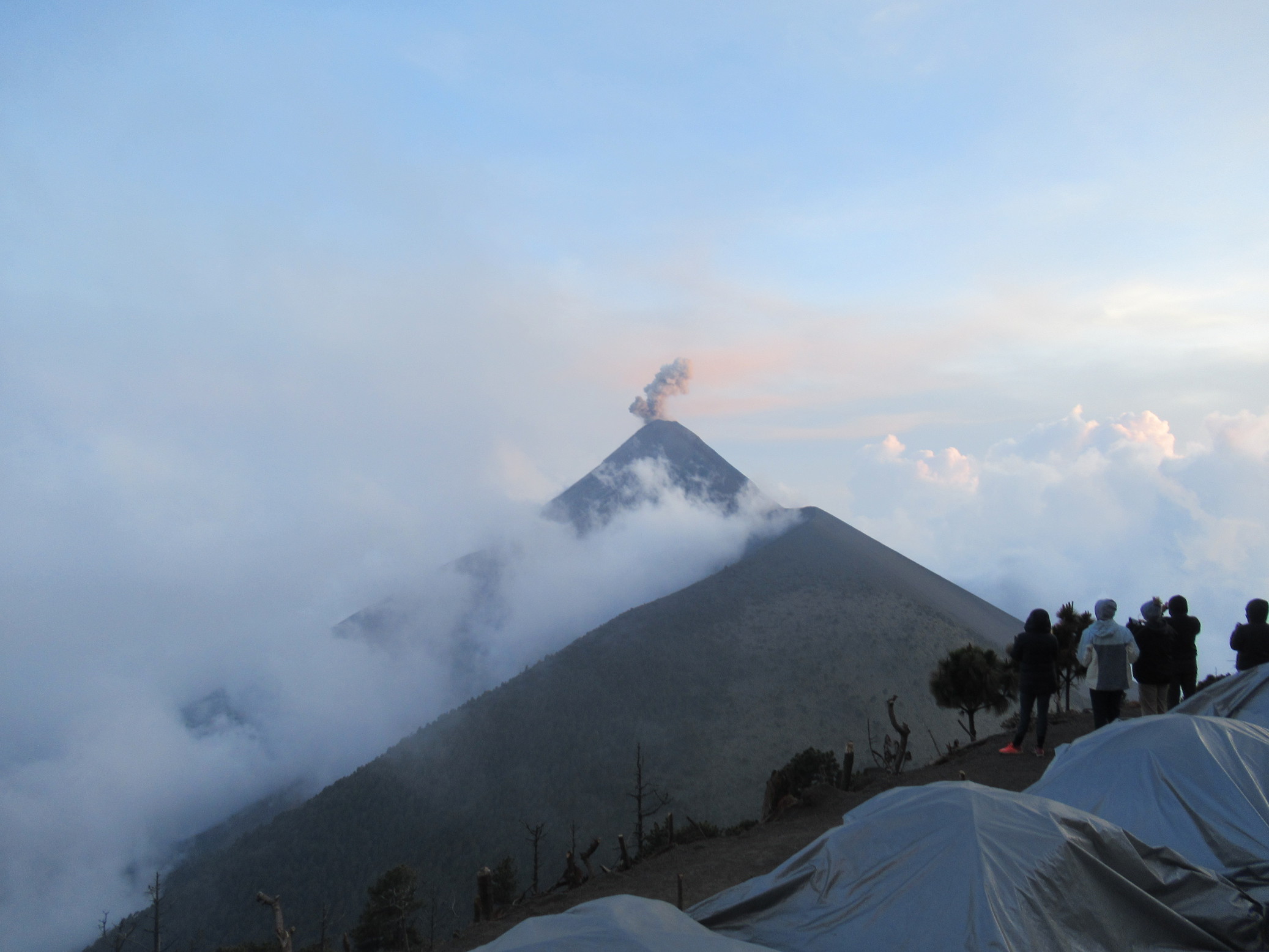I climbed Acatenango last night with a group of 14 and 2 guides. Others who have done it have said it’s the best thing they’ve ever done. I’ve already climbed beyond 4000m, have climbed an active volcano and have watched the sun rise from mountain tops, so I wasn’t fussed whether I did this or not, but I’m glad I did. We went with Gilmer Soy because they’re known to have an amazing campsite and because part of our fees goes to helping the local communities. We weren’t disappointed.
The pick-up wasn’t smooth, and we all thought it would be better if they just told us to meet in the town centre, but we were at Soy Base by about 9am, collecting lunches, borrowing bags and jackets and renting walking staffs, gloves, scarfs and beanies. After my experience on the Inca Trail, I decided to rent a staff this time. We were probably walking by about 10am, and as I’d been warned, the first hour was pretty tough. We were out in the open, and the trail was steep with loose stones. The next 3 hours were mostly under the canopy of a rain forest, and we took regular breaks, so the climb flew past. At some rest stops, locals have fresh coffee and hot chocolate available as well as biscuits and chips.
We walked past a number of campsites to arrive at ours, which seemed to be the last, and almost faced Fuego, which is very active. It erupted to welcome us, sending a plume of black smoke into the sky and rumbling like thunder. It turns out I’ve been hearing this sound over the last few weeks, thinking it was actually a storm somewhere. While some groups have to wait until late evening for the clouds to clear, we had a great view for most of the evening and were treated to a spectacular fireworks display. For some reason, the red of lava wasn’t visible until the sun had set, and we spent a lot of time theorising whether this was due to the temperature difference causing lava to flow or that the glow was too faint to see in daylight. The latter seems unlikely.
Our guides put on a delicious dinner of beans, stir fry noodles and mashed potato, then served up hot chocolate and marshmallows with sticks for roasting around the campfire in the viewing tent. They then told us that we should be up at 3:50 the next morning to make the summit for sunrise. That came around quickly, and we began the two-steps forward, one-step back struggle for the summit, crossing paths with a number of other groups on the way up. The towns below were all lit up, and we saw the first glow of sunlight from fairly close to the campsite, so it’s not necessary to make the ascent for the sunrise, but we were all glad we did to see the 360 degree views of the surrounding volcanoes.
We slid most of the way down to the tents and then to the cars, and I was glad of the staff to take some of the strain off my knees. This was the main reason I’ve stayed in Antigua rather than moving on to lake Atitlan, so I expect I’ll head that way next weekend to find another school in a town closer to nature.

That’s pretty awesome! Looks like you’re having a hot time. I lava the video.
As for the visibility of the lava, yes, it’s because it doesn’t emit enough light to be seen during the day. It’s just the way our eyes work. The presence of a more intense light source will drown out the low intensity light emitted from the lava. Our eyes only have a limited dynamic range, and that range changes with the most intense light source that is present.
Of course, also backed up by experience, walking the lava fields in on the Big Island in Hawaii, and being only a few meters away from oozing lava.
Really? I wouldn’t have thought that the light emitted would have been such low intensity.
Well, lava emits low intensity light compared to daylight. At night, lava is obviously much more intense than anything around, and the eye picks up on that.
Your mobile phone screen is a good example of this. Try fixing the brightness level to low. At night, the screen is intensely bright. In sunlight, you will not be able to see anything on the screen.
I guess I expected lava to be brighter based on my memory of your photos and all the footage we see. I still have my doubts. If the lava 500m away is bright enough to see when I’m sitting next to a fire, surely it would be bright enough to see in daylight. Justine is asking her geology professor friend, who’ll probably confirm your explanation.